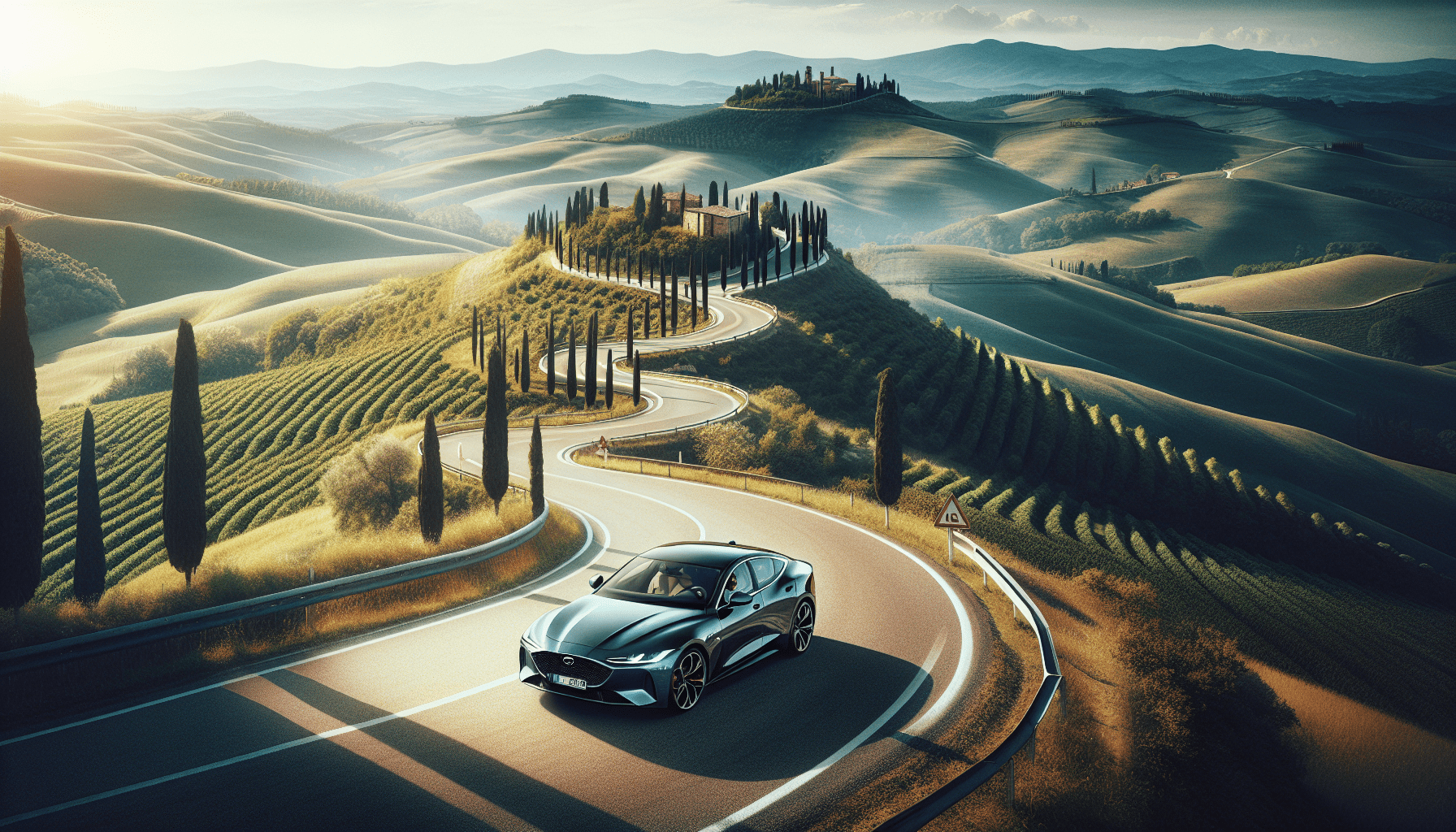BAGSMART Clear Toiletry Bag, 2 Packs TSA Approved Water resistant Quart Size Travel Organizer, Airport Airline Travel Essential Carry On Makeup Cosmetic Bags for Women, Black
$6.45 (as of April 22, 2025 06:42 GMT +00:00 - More info)When you venture into the picturesque Italian countryside, renting a car can be a fantastic way to explore charming small towns and hidden gems. However, tourists planning to drive in Italy need to stay particularly alert for Zona Traffico Limitato signs and other local road rules. These specific traffic-restricted zones are designed to protect historical areas and come equipped with cameras that automatically issue fines if breached. By avoiding major cities and opting for public transport within urban areas, you can steer clear of these zones and make the most of your travels. Ensuring you are comfortable driving under Italy’s road conditions, considering rental insurance, and remembering to drive on the right side of the road will also contribute to a smoother and more enjoyable driving experience. Have you ever dreamt of diving into the picturesque landscapes of Italy, with the autonomy to traverse winding country roads at your own pace? While renting a car in Italy seems like the perfect way to soak up the local culture and explore charming hidden gems, there are a few critical factors you should be aware of before you set off on your Italian road trip adventure.

Shop These Accessories for a Comfortable Trip
Why Renting a Car in Italy is a Great Idea
Freedom and Flexibility
One of the primary benefits of renting a car in Italy is the freedom it provides. Unlike train schedules or guided tours, having a car allows you to set your own itinerary and explore at your own pace. Imagine being able to stop at a quaint vineyard in Tuscany or lingering at a secluded beach on the Amalfi Coast without worrying about missing the last train back.
Access to Off-the-Beaten-Path Locations
While Italy’s major cities like Rome, Florence, and Milan are incredible in their own right, the true essence of Italy lies in its small towns and rural areas. Having a rental car opens up opportunities to visit less accessible yet equally enchanting places like the hilltop towns of Umbria or the ancient cave dwellings in Matera.
Convenience
Traveling by car eliminates the hassle of scheduling and the potential inconvenience of public transportation delays. You can also carry your luggage with ease and make spontaneous stops to enjoy the breathtaking scenery.
The Basics of Driving in Italy
Understanding the Road Rules
Italian road rules are relatively straightforward but strictly enforced. Unlike the U.S., distances and speed limits are measured in kilometers. Italy also drives on the right side of the road, which should be familiar to U.S. travelers.
License Requirements
To legally drive in Italy, U.S. travelers will need an International Driving Permit (IDP) along with their U.S. driver’s license. Make sure to obtain the IDP before your trip, as it’s not possible to acquire it once you are in Italy.
Toll Roads
Many highways in Italy are toll roads, known as “autostrade.” Be prepared to pay toll fees, which can be done with cash or a credit card at toll booths. Alternatively, you can get a “Telepass” device from the rental agency to automatically pay tolls without stopping.
Shop These Accessories for a Comfortable Trip
Navigating the Zona Traffico Limitato (ZTL)
What is a Zona Traffico Limitato?
The Zona Traffico Limitato, or ZTL, is a restricted traffic area commonly found in larger cities. These zones are designed to protect historical sites and reduce congestion. Entering a ZTL without proper authorization will result in automatic fines, as these zones are monitored by cameras that capture your license plate.
How to Identify ZTL Zones
ZTL zones are marked by signs, usually white with a red circle and the letters “ZTL.” Pay close attention to these signs to avoid inadvertently entering.
Avoiding Fines
To avoid incurring fines, it’s best to avoid driving in major cities where ZTL zones are prevalent. Instead, use public transportation, which is efficient and well-connected in cities like Rome, Naples, and Florence. Save your driving for rural excursions where ZTLs are less common.
Safety and Precautions
Adapting to Local Driving Habits
Italian drivers are known for their assertiveness, which can be intimidating for newcomers. Expect quick lane changes and frequent use of the horn. Stay alert and confident, but not overly aggressive.
Roads and Signage
Italy’s major highways are well-maintained, but city streets can be narrow and challenging to navigate. Always be prepared to reverse, especially in older towns with exceedingly narrow streets.
Speed Limits
Speed limits in Italy vary: 130 km/h on highways, 90 km/h on secondary roads, and 50 km/h in urban areas. Always look out for signs to stay within legal limits.

Rental Car Insurance
Why You Need It
Getting rental car insurance is always a wise decision, especially in Italy. It offers peace of mind and covers you in case of an accident or damage to the vehicle.
Insurance Options
If you have a travel credit card like Chase Sapphire Reserve, rental car insurance is often included if you use the card to book your rental. Alternatively, you can purchase insurance through agencies like Allianz Travel.
Here’s a basic comparison of options:
| Insurance Provider | Coverage | Cost |
|---|---|---|
| Chase Sapphire Reserve | Included with card benefits | Free (if booking with the card) |
| Allianz Travel | Comprehensive coverage | Varies by plan |
Checking Your Coverage
Always check your existing insurance policies to see if they cover international car rentals. It’s vital to understand the extent of your coverage before you pick up your rental car.
Renting the Right Car
Manual vs. Automatic
Manual cars are more common in Italy, but if you’re more comfortable with an automatic, make sure to specify this when booking. Websites like Booking.com allow you to filter selections based on your preferences for transmission type, size, and other specifications.
Size Matters
Consider the size of the car, especially if you plan to navigate narrow city streets and rural roads. A smaller car is often more practical and easier to maneuver.
Booking in Advance
Make your reservations well in advance, particularly during peak tourist seasons, to ensure you get the vehicle that suits your needs.
Must-Know Tips for a Safe Journey
Always Carry Cash
While most places accept credit cards, having cash on hand is useful for tolls, parking, and small purchases in remote locations where card machines may not be available.
Parking
Parking can be challenging in cities and tourist areas. Look for designated parking lots or garages and avoid parking in restricted zones to prevent fines.
Emergency Numbers
In case of emergencies, dial 112, the European emergency number, which connects you to police, fire, or medical services.
Breakdown Assistance
Ensure your rental package includes roadside assistance in case of breakdowns. Most reputable rental companies offer this service, which can be a lifesaver in remote areas.
Planning Your Italian Road Trip
Mapping Your Route
Before setting off, plan your route to include some of Italy’s lesser-known treasures. Here are a few must-visit spots:
- Tuscany: Renowned for its rolling hills, vineyards, and historic towns like Siena and San Gimignano.
- Umbria: Often called the “green heart of Italy,” this region offers beautiful landscapes and ancient towns like Assisi and Orvieto.
- Amalfi Coast: Famous for its stunning coastal views, picturesque towns like Positano, and delicious cuisine.
Accommodations
Consider staying in agriturismos (farm stays) in rural areas for an authentic Italian experience. These accommodations often offer local food, wine, and activities that provide a deeper connection to the region.
Cultural Etiquette
Respect local customs and driving etiquettes, such as not honking unless necessary and using indicators. Being courteous on the road will enhance your travel experience.
Sustainable Travel Tips
Eco-Friendly Vehicle Options
Many rental agencies now offer eco-friendly vehicles, including hybrids and electric cars. Opting for an environmentally friendly option can reduce your carbon footprint.
Responsibly Touring Rural Areas
Stick to designated routes and avoid driving off-road to protect Italy’s natural landscapes. Dispose of waste properly and respect wildlife.
Supporting Local Businesses
Frequent local eateries, shops, and accommodations to support the economy of the smaller towns you visit. Purchasing locally made products and food can provide a richer travel experience and contribute positively to the areas you explore.
Conclusion
Driving in Italy can be an immensely rewarding experience, offering unparalleled freedom and access to the country’s most charming and less-explored destinations. While there are several factors to be mindful of, such as ZTL zones and local driving customs, being prepared will ensure a smooth and enjoyable journey. Whether you’re meandering through the Tuscan countryside or navigating the narrow streets of an ancient town, your Italian road trip awaits, promising unforgettable memories and a deeper appreciation for this beautiful country’s unique culture and landscapes. Safe travels!
Shop These Accessories for a Comfortable Trip






